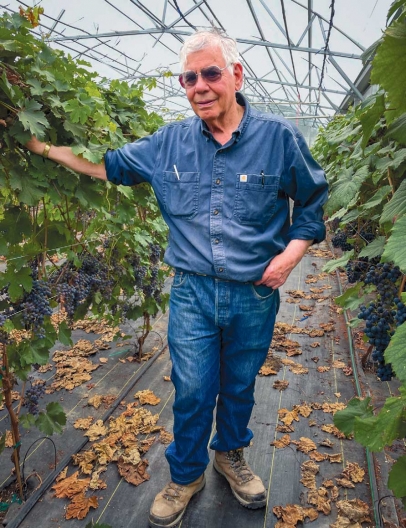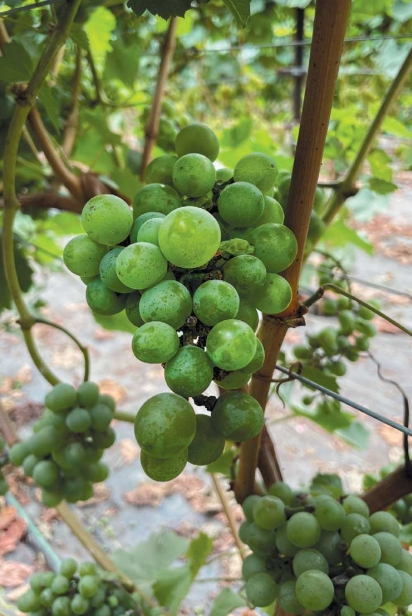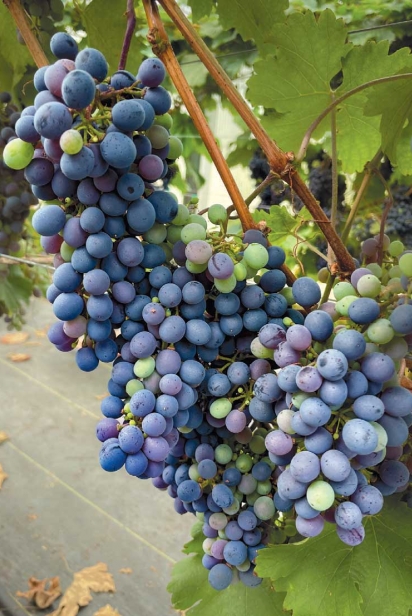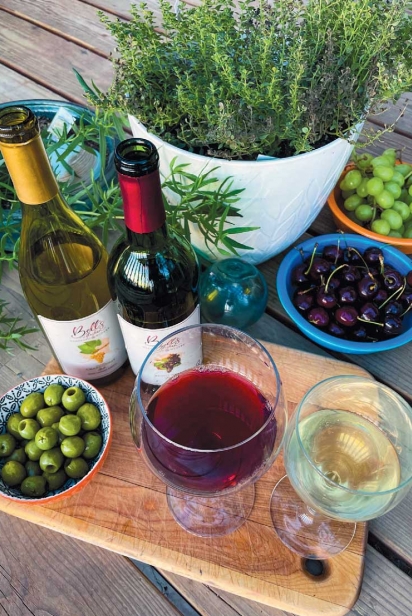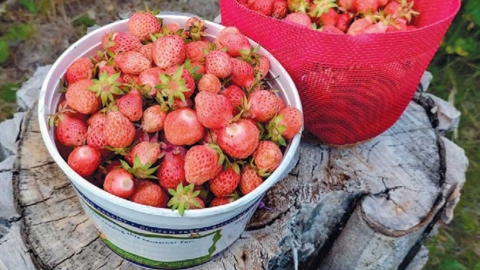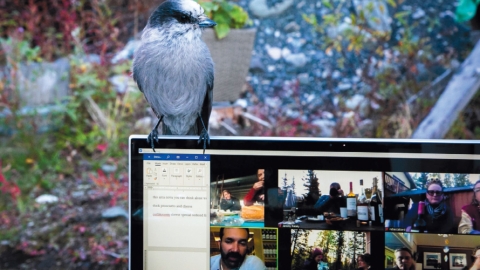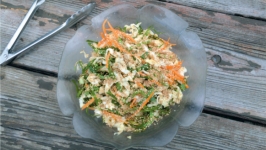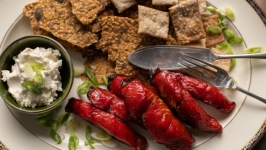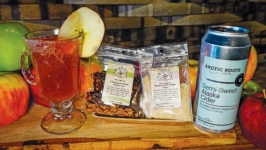Vine to Glass
IN THE ANCHORAGE BOWL
A couple of years ago in early June, I was at Bell’s Nursery looking for a haskap berry bush. I came home with a saskatoon instead and a sneak peek at an eye-popping new project from the mind and hands of the nursery’s founder, Mike Mosesian. This summer, I returned for an update and a chat with the farmer himself. If you’ve eaten an Alaska grown tomato from the grocery store, there’s a very good chance it came from Bell’s Nursery. But have you heard of Bell’s Vineyard? After early batches of just a few gallons, owner Mike Mosesian says, “This year we’ll probably have 500 gallons of wine, and we should be bottling cabernet sauvignon and pinot noir.” Wine is in Mosesian’s blood. “My ancestors,” he says, “when they came to America… they grew grapes.” They immigrated from Armenia, possibly the oldest wine producing region in the world.
Mosesian’s family had wineries and made raisins in California where he grew up. “My father carried on that tradition. He farmed 1,000 acres—table grapes and wine grapes.” Mosesian even went to school in California for viticulture, but then, he says, he “broke away in 1972 and came to Alaska.” He had noticed folks growing hydroponic tomatoes in Minneapolis, and thought, well, “It was a little colder there than Anchorage.”
From his Alaska beginnings, Mosesian grew table grapes for his own enjoyment. In 2012, though, he realized that people were selling “made in Alaska” wine based on imported grape concentrate. He felt inspired to go back to his roots—Vitis vinifera roots, to be precise. He thought, “I know how to grow grapes. I’ll just start growing wine grapes.” Today, Mosesian has about an acre and a half of vines growing in soil under the protection of his greenhouses. He says Anchorage soil is rich and perfect for grapes, and the climate means he doesn’t have to deal with pests. On its own, Mosesian says, an indoor vineyard would not be a viable operation, but in greenhouses, he can raise hanging baskets from the rafters in the early spring with no harm to the vines, and the sale of flowers covers the year-round cost of heating the greenhouse vineyard.
Mosesian prefers dry, drinkable table wines. “I have four reds. I have pinot noir and cabernet sauvignon, cabernet franc, and malbec… And then, I even have pinot grigio, and some chardonnay.” Bell’s wines have a slightly lower alcohol content than many popular commercial wines, and that’s just fine with him. He says he can remember half a century ago when a table wine averaged about 11 percent alcohol, and now he’s seeing them at around 15 percent. But he prefers the taste of wine over a big buzz. Bell’s Vineyard wines sell at Anchorage Wine House, La Bodega, Brown Jug, and elsewhere around town, and at a few restaurants like Southside Bistro and The Marx Bros.
A few weeks after my visit to the vineyard, I found a moment to open two bottles given to me as a gift at the end of my tour, a pinot noir and a chardonnay, with a few friends. We shared some non-local snacks—olives, cheese, and grapes—and enjoyed the novelty of a completely Alaska made wine. Both were fruity and pleasantly drinkable. The red had a satisfying earthiness… was it terroir? We thought it was too soon to say. The pinot opened up a bit after time in the glass. With anticipation about how future vintages might develop, we said “cheers” to Alaska wine.


